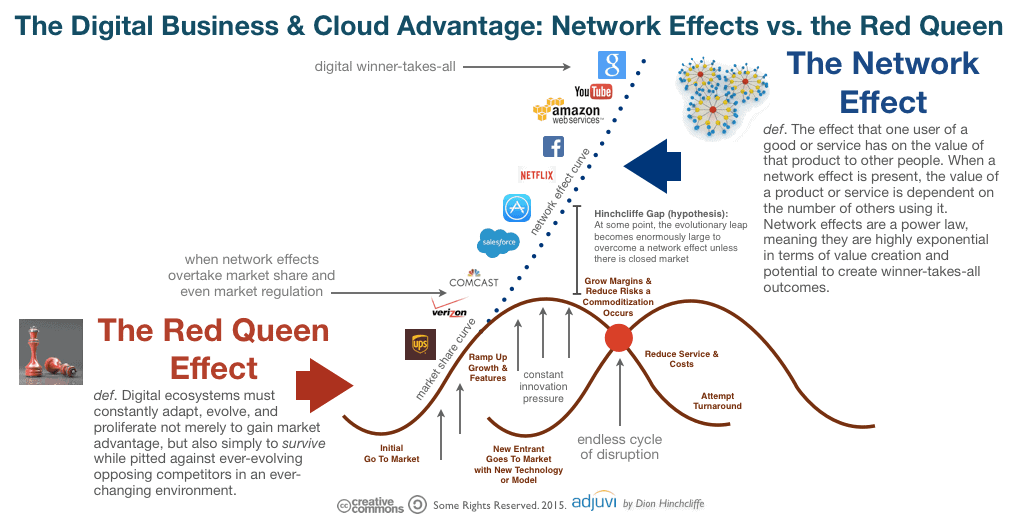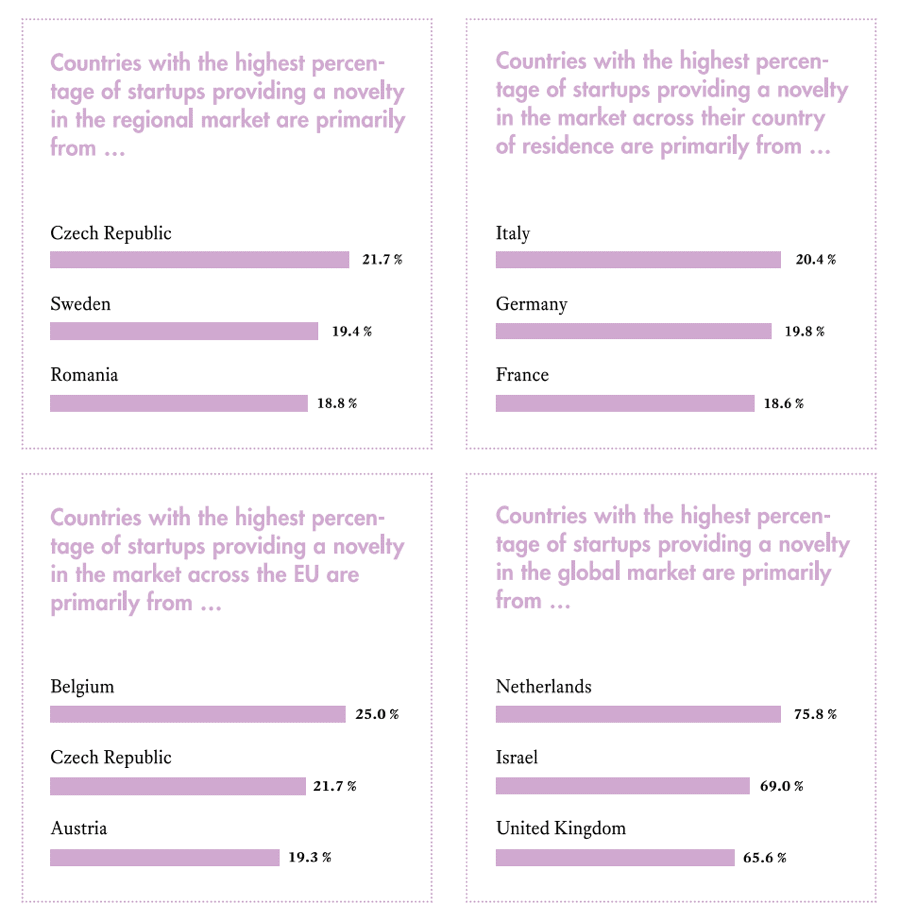How business scalability works

Scalability is a magic word for innovators. It is what sets Amazon apart from your local retail store, Uber from a taxi company, and Apple from Asus. It is also what ultimately differentiates startups from run-of-the-mill tech ventures. But scalability is a call difficult to answer, partly –but not only– because it’s very ill-defined. Let’s explore some key points you should wrap your mind around if scalability matters to you.
Size does matter
To my knowledge, the term ‘scalability’ became used openly with the rise of computing and the apparition of the first commercial server systems. For IBM to lure the first multinationals to implement computing networks, it was essential to bait them to set up a first mainframe and a few nodes. They would then explain that it would be painless to scale-up by adding more nodes and more servers if the implementation were successful in a first service.
Twenty-five years later, networks are generalized down to the consumer level. Cloud computing appeared less than ten years ago, and all tech businesses have now pretty much instant access to massive elastic IT backbones. Meanwhile, scalability graduated from tech lingo to finance. It is now deemed scalable, a business with the potential to go from zero to one, from one to ten, from ten to one thousand, and from one thousand to a billion, without necessarily modifying the way it operates.
As previously indicated, at the core, this is what separates a classic early-stage business from a startup. When all other European cities and governments brag about the number of startups they are helping birth and grow, they, in fact, refer to young companies having spendings in R&D — whatever their market is. It’s cute, but it doesn’t mean that said companies are designed and structured to present exponential growth or any scalability whatsoever.
Check the various EC reports on startups, and you will see that most of them that survive the three year period (which is around 3-5% of them when taxes finally fully take effect) have only between five and thirty employees. Nothing wrong with that; they’re just not startups: they are orders of magnitude below the scaling curve.
In this regard, one of the largest international VC funds we’ve been working with for a few years has radical views on how many startups there are in Europe. If you really factor in scalability, the total is probably less than 500.
This would lead us to discuss how so-called innovation networks are most of the time doing blunt territorial marketing instead of building startups ecosystems, but I don’t want to spend time on this right now… Instead, let’s go back to our practical discussion and understand the notion of scalability more precisely.
Replicative scalability
Let’s start with the simplest form of scalability to understand. It is also one of the oldest in the book: you met it with McDonald’s, Starbuck, or Ikea.
The key idea is to build the first autonomous, local business. Once this business cell demonstrates profitability, you take a snapshot of how it operates. It becomes your master template, and you replicate it as many times as possible, but with as much fidelity as you can afford. The trick is to build a template that will run in various geographical and cultural settings pretty much in the same way, to deliver the same added value, eventually compounded as a network brand.

If you intend to let others invest and run most of the business cells and use your brand, you call that a franchise. But it doesn’t have to be, and the same company can own every cell. However you do it, you will also start to invest in centralized services, such as HR or marketing, and get subsequent economies of scale.
The fundamental difficulty here is to think from the get-go, as a global brand with a process that works relatively in the same way in any market. Finding this trans-market focus is highly tricky. Most startups trying to achieve scalability through cell replication end up degrading the concept in many variations that end up being a nightmare to run with local teams fighting HQ and customers confused about what is done by the startup.
If you consider that Uber is using this scalability model from city to city worldwide, you will understand the problems they face at being like Ikea when they have to accept cash in India or offer bikes in the Netherlands).
The key benefit, though, is that if you get your foot in the market, further risks are somehow limited. Since you have to be profitable early on at the cellular level, you don’t have to build a large-scale operation before discovering if you’ll get money out of the process. To say it in another way: sunk costs are minimal regarding the possible scale of operations. As a startup, if your first local activity generates even a tenuous level of profits, and you start replicating further on, then you get geometrically stronger bargaining power with investors.
And finally, the trade-off is that this strategy will not give max velocity. It is very robust in the sense that some business cells can fail, without much impact on the whole structure, but there is no strong network effect in having a hundred or a million McDonald’s restaurants open. Your brand is better, some costs of the structure become super lean, but you’re no Facebook.
Self-fueling scalability
The next step of scalability is about going beyond mere replicability.
The key idea is that you build a business designed to fuel by itself its own rapid growth. How cool is that?
Confused? Think of how Amazon started a national on-line store fuelled at first by its own selection of products. But exponential growth came by letting third parties in with their own goods (that were, or were not, delivered by Amazon). This was the invention of the long-tail marketplace: the more product there is, the more likely customers will find what they need, extra ideas, and the incentive to come back.
Luring third-parties to bring their own offer in the marketplace is self-fuelling the business’s scale: the more there are, the more incentive others will have to come. This is largely counter-intuitive when you rely on spreading your offer to the most arcane products. What matters is that whoever comes will find what they want and have the incentive to return again and again.
We sold more books today that didn’t sell at all yesterday than we sold today of all the books that did sell yesterday.Jeff BEZOS
Obviously, finding how to self-fuel your own business is the key difficulty. But you do have a tremendous advantage over how things were ten years ago when Amazon started. You have the internet. Or more importantly, everyone has the internet, at all times, everywhere. As such, on paper, it’s technically trivial to leverage network effects in your business.

What is not trivial is real life, when every single one of your would-be competitors also has access. These last years the fight to reach critical mass around network effects of any sort has devolved in a bloodbath. Do startups still believe they can enter the market to promote local events and restaurants in a city, build up a community, and become a new Yelp? Well, they’re coming to a gunfight with foam swords. Reaching critical mass and self-fueling a business on network effects requires from now on a mountain of cash. We’re speaking daily-TV-spots-on-day-one kind of cash, not hey-I-got-a-$50-AdWords-coupon. The first entrant doesn’t win; it’s the first to reach critical mass. And if there’s already one, there’s no second place.
Now, network effects are not the only engine capable of self-fueling scalability. Self-reinforcement, positive feedback loops, community building, closed garden strategies, and a few more can be used and mixed. But truth be told, in a world gone digital and not looking back, it will be difficult to find more robust scalability than the one provided by network effects.
Regarding the previous form of scalability, I believe I made the risk very clear: it’s a winner takes all game. If you don’t win, you lose everything. I also realize that it became increasingly tricky to find a first niche market to start in and then build a self-fueling engine from there.
One potent trick to escape this issue is to grow a self-fueling engine that is not strictly your core business. Let’s use Tesla as an example: I’m not going to surprise you that they build cars; this is their core business. However, the way they intend to scale their business is not through the automotive market strictly. They will scale selling cars through the energy market. Their self-fueling engine will be active when they reach a critical mass of worldwide easy access, a free (or dirt-cheap) network of charging stations.
pic.twitter.com/kCz0bl9DYySeptember 3, 2016
These charging stations do not create a ‘network effect’ per se. However, it still qualifies as a self-fueling engine in the sense that if you want an electric car in the US, which one would you choose: one that has fast access to the best energy grid or one that has not? How can GM or Ford fight back with “just cars”? But understanding what scaling a car business in 2017 means is clearly difficult to cope with for businesses born a century ago.
In conclusion, what we call self-fueling scalability is tricky, requires that you go all in to be the first reaching critical mass. Still, it will deliver much more rapid growth and scale than simple replicative scalability.
Platform scalability
But let’s not stop here; there is an even more significant, faster, meaner form of scalability. You heard about it a lot and probably took it for granted; it’s building a platform business.
That strategy is pretty much the opposite of a franchise. You don’t build a business that you (or others can replicate). You create powerful capabilities to run specific businesses and open them up as large as possible to the market. You may have to demo your platform’s power by using it yourself to launch the first killer app.
The killer app that got the world ready for appliances was the light bulb. So the light bulb is what wired the world. And they weren’t thinking about devices when they wired the world. They were really thinking about – they weren’t putting electricity into the home. They were putting lighting into the home. Jeff Bezos
But don’t be fooled; this is not this business that will scale and make money. It’s always the platform. And this is a key difficulty: the very people that build powerful platforms might become confused about what they are selling.
What happens instead systematically is that you will try to benchmark a competing platform through its products. Samsung fighting Apple on the microchip’s specifications, the quality of the display, or the battery size is plain denial. An iPhone is not better than a Samsung in itself (well, when neither explodes).
What lead to this:
https://t.co/8BJKIQnie5#AppleEventpic.twitter.com/OpSpkxtZPTSeptember 7, 2016
… is not the device.
A platform strategy’s key idea is probably a bit more ambitious than with the two other strategies, and it’s about reaching sustainable inertia.
The power of a dominant platform is that you can remove the floppy or CD drive from your computers, remove essential connectors from your mobile phones, and somehow the rest of the industry will have to listen and adapt. When Apple releases the audio jack of their flagship phone, the ecosystem of third-parties making headphones does not have a choice: they will have to deliver compatible solutions. Their business depends on being consistent with the dominant platform. And the competitive advantage that Apple is enforcing is not about ease of use, and certainly not about audio quality. It’s about energy consumption: going wireless means more energy required, more power efficiency, better battery/software integration. This is one of the key areas where Apple platform leads the way.
It also means that
you will probably be able to listen to your Apple TV, laptop, phone, or car in a year or two in a year or two, without connecting to the actual device. Platform strategies demand that you orient every innovation topropagate to the rest of the platform.
Every incremental or rupture technology amelioration you bring in your platform has to be leveraged in all the platforms — not just in a small perimeter.As such, understanding platforms are never straightforward. You may think that an audio jack removal is about audio, it’s not. It’s about leveraging and enforcing your dominant position in a key aspect of what runs the platform.
Scalability is a long journey
I’m not going to pretend that I don’t take shortcuts and oversimplify complex stories by trying to layout these strategies clearly.
We can easily understand that Uber went through these three scalability forms and now try to be a platform business. If you doubt it look at how they now formulate their vision:
On the other hand, Apple went probably more through a coming of age with the iPhone in 2007 and realized that they did not have a blockbuster device in hand. Still, a nascent platform, which, being mobile and rooted in entertainment (iTunes), could aim for global consumer domination.
And if we must speak of Twitter… Well, they were designed from day one as a platform business, but they never reach enough critical mass to monetize. The key obstacle was how they closed the platform to find a monetization strategy a few years ago. Alas, a closed platform, is not a platform anymore. When WeChat offers a myriad of services, including payment, Twitter is still a trendy micro-blogging platform, but nothing more.
But for startups, the first goal is to reach initial satisfying traction, which will prove that somehow, they could get critical mass. In 2013, 500 Startups was giving these ballpark figures of what that would mean:
- Enterprise: 1,000 seats at $10 /seat /month
- Multinational: 2 paying pilot contracts
- Social: +100K downloads or signups
- Marketplace or e-Commerce: $50K revenue /month
A few years later, given the global explosion of startups, this an even taller order.
Why first startups fail at scaling
A neo-entrepreneur will usually believe in true scalability, where you could scale a ten-person operation to a hundred, and then ten thousand, pretty much in the same way. However, no business activity is purely elastic. The underlying logic, the infrastructure… the culture! As we tried to explain, they have to be specially wired from the get-go to sustain growth.
You don’t retrofit a scalability engine in a business that already has strong momentum. It may happen on paper, but it will require such a sharp refocusing on a core concept and such a painful pivot that will burn the startup down.
And there are many paradoxes associated on how to achieve scalability.
The first one is that you may create a startup without knowing your business model, but you should already prepare for scalability as we explained.
For instance, will the first two developers you hire be able to grow in a senior position or work comfortably in an open-space of fifty? Is your innovative autonomous farming vehicle designed with as few parts as possible and with a streamlined bill of materials for when you’ll have to subcontract production abroad? Are your sales, or supply process, ready to absorb the dreadful possibility that you will be a success? If you don’t solve this paradox, you’ll try to follow-up on early success by ramping up with unorganized solutions. You will then be burning cash trying firefighting problems instead of playing two or three moves ahead. We usually call the fatal resolution of the first paradox ‘death by critical success’ (this is why you have seen so many tremendously successful Kickstarter projects explode months after the expected delivery date, without even delivering anything).
The second paradox is linked to the previous one but arrives later for the 1% successful startups that survive the initial ramp-up.
After three or five years, your business is now more or less reliable, and you probably reached a one million something milestone. Things look amazing, and investors fighting to pour more money into your operation. You will now have to switch your leadership vision from “move fast and break things” to “move fast and consolidate.” Making a cultural switch from disruption mode to mainstream core business is as challenging and as lethal as the opposite iconic innovator’s dilemma.
This is again why you’ll see most of the rock-star founders replaced after a while by more seasoned CEOs. It’s not so much that investors want to take control, but rather that they see a dead-end coming up fast. Steve JOBS was eventually incredibly successful at Apple’s helm to reach world domination, but it would require a Tim COOK to keep it there and push it steadily further. And when some tech analysts think that the latest iPhone is not innovative enough, they probably wish for something that would excite geeks and early adopters. Well, this is not where the growth will be coming from…
How innovation ecosystems can help
I don’t know if you read this article from Dublin, Paris, Stockholm, or Munich. I know that the city you’re working in broadcasts that it intends to be one of the most important innovation ecosystems in Europe (or Asia, or Northern America, etc.)
To do so, your ecosystem has to be able to incubate really scalable businesses in potential future ‘unicorns.’ If not, they’re just doing tech and R&D, which is perfectly OK but hasn’t that much to do with business and innovation — despite what IP lawyers would like you to believe.
If there’s one thing that we regularly repeated in this article, scaling is hard. And what Dublin, Paris, Stockholm, or Munich are lacking is not smart people, innovation strategists, or money… what all these cities lack is critical mass potential. If someone explains to you that you can scale a business in a few dozen million people country (or worse in a million and a half people city), they are stupid or lying to you. You can only scale in massive, integrated market ecosystems such as the US or China.
Europe should be such an ecosystem; it’s not.
And the fundamental reason is that
Dublin, Paris, Stockholm, or Munich try to win the race all by themselves: they all want to be the European Silicon Valley. By doing so, they try to attract startups,, preventing them from spreading out as soon as possible.At this game, the biggest, proudest countries are the worst (with the notable exception of the UK):

Opening your market as widely as possible is an indisputable solution to find a scalable business model.
When in Europe we try to copy Silicon Valley’s recipes, we forget that Paris and Berlin are not really in the same market, even if on paper the European Community is an open economic space.
I must admit that while I’ve been working with many incubators in Europe these last ten years, I consistently failed to convince them to do things as simple as taking their startups for a ten-day trip in a few other capitals.
As a last perspective on this long article that started as a technical one on how business scalability works, and that is now dangerously falling in geopolitics, I would recommend that if you’re leading an innovation hub in one of our beautiful cities of Europe, you will get inspired by what Amsterdam or Pittsburgh is doing:



